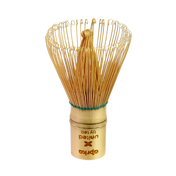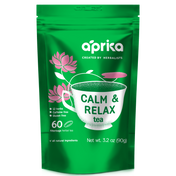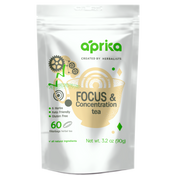
Welcome to the world of Sencha green tea - a true gem among teas! Originating from Japan and cultivated with utmost care, Sencha offers a unique and refreshing taste that captivates tea enthusiasts worldwide. In this comprehensive guide, we will take you on a journey through the rich history, meticulous production process, delightful aroma, and the myriad health benefits of Sencha green tea. Whether you're a seasoned tea connoisseur or just starting your tea adventure, this guide will provide you with everything you need to know about this beloved Japanese tea.
What Is Sencha Green Tea?
Sencha green tea is a type of Japanese green tea made from the leaves of Camellia sinensis, the tea plant. Unlike matcha, which is finely ground green tea powder, Sencha is crafted using loose tea leaves. The tea's unique characteristics stem from its cultivation, harvest, and preparation methods, making it a cherished part of Japanese tea culture.
History of Sencha Tea
The roots of Sencha can be traced back to the 8th century when tea cultivation was first introduced to Japan by Buddhist monks. However, it wasn't until the 18th century that Sencha as we know it today emerged. A tea merchant named Nagatani Soen revolutionized tea production by steaming the leaves, leading to the birth of Sencha and other steamed green teas. Since then, Sencha has become an integral part of Japanese daily life and is deeply ingrained in the country's tea traditions.

Production:
Authentic Japanese Sencha, such as AprikaLife Organic Sencha, is produced with meticulous attention to detail. The tea plants are grown in the fertile soils of Japanese tea gardens, where the climate and altitude play a crucial role in shaping the tea's flavor. The leaves are carefully handpicked in the spring, ensuring only the youngest and most tender shoots are harvested. After plucking, the leaves undergo a traditional steaming process to preserve their vibrant green color and natural flavors. Once steamed, the leaves are skillfully rolled and dried, resulting in the distinct needle-like shape that characterizes Sencha.
Fun Fact: 80% of all tea produced in Japan is Sencha Green Tea!
The popularity of Sencha in Japan is undeniable. The majority of tea plantations across the country are dedicated to cultivating this beloved green tea variety, showcasing its significance in Japanese culture and daily life. This statistic reflects the deep-rooted love and appreciation for Sencha among tea drinkers both in Japan and around the globe.
Aroma and Flavor
The aroma of Sencha is enchanting, reminiscent of freshly cut grass and the subtle sea breeze of Japan's coastal regions. When brewed, the tea exudes a grassy and vegetal fragrance, inviting you to savor every sip. Its taste is a harmonious balance between sweetness and slight bitterness, accompanied by an earthy undertone that lingers on the palate. The delightful combination of flavors makes Sencha an unparalleled tea experience.
Health Benefits of Sencha Green Tea
Sencha green tea offers a wide range of health benefits, making it a popular choice for those seeking a natural and nourishing beverage. Here are some of the notable health benefits of Sencha green tea:
• Rich in Antioxidants: Sencha is abundant in powerful antioxidants called catechins, particularly epigallocatechin gallate (EGCG). These antioxidants help combat free radicals in the body, reducing oxidative stress and protecting cells from damage.
• Boosts Immune System: The high levels of catechins and polyphenols in Sencha green tea can strengthen the immune system, aiding in the body's defense against infections and illnesses.
• Supports Heart Health: Regular consumption of Sencha has been associated with improvements in cardiovascular health. The tea may help reduce LDL cholesterol levels, improve blood flow, and promote healthy blood pressure, reducing the risk of heart disease.
• Weight Management: Sencha contains compounds that may assist in weight management efforts. EGCG and other polyphenols in the tea have been linked to increased metabolism and the ability to help break down fats.
• Brain Health and Focus: Sencha contains an amino acid called L-theanine, which has a calming effect on the brain without causing drowsiness. This can improve focus, concentration, and cognitive function.
• Reduces Stress and Anxiety: The combination of L-theanine and caffeine in Sencha green tea can promote relaxation and reduce stress and anxiety levels, helping to maintain a sense of calmness.
• Oral Health: The natural fluoride content in Sencha green tea can contribute to improved oral health by helping to prevent cavities and reducing the growth of bacteria that cause bad breath.
• Digestive Health: Sencha's polyphenols and catechins may support digestive health by promoting a healthy gut microbiome and aiding in the digestion process.
• Detoxification: The antioxidants in Sencha green tea can aid in detoxifying the body by supporting the liver's natural detoxification processes.
• Anti-Inflammatory Properties: Sencha's EGCG and other bioactive compounds have shown potential anti-inflammatory effects, which may help reduce inflammation and alleviate certain inflammatory conditions.
• Skin Health: The antioxidants in Sencha may contribute to healthy and radiant skin by protecting it from UV damage and promoting collagen production.
• Diabetes Management: Some studies suggest that regularly consuming Sencha green tea may help improve insulin sensitivity and blood sugar levels, making it beneficial for those with type 2 diabetes.
• Bone Health: Sencha green tea contains minerals like calcium and fluoride, which can contribute to improved bone density and overall bone health.
It's important to note that while Sencha green tea offers these health benefits, it is not a cure-all solution. Incorporating Sencha into a balanced and healthy lifestyle, along with a nutritious diet and regular exercise, can contribute to overall well-being and health. As with any dietary supplement, it's advisable to consult a healthcare professional if you have specific health concerns or conditions
How to Brew Sencha Green Tea
Brewing Sencha to perfection requires attention to detail. Begin by using high-quality loose leaf Sencha and filtered water to ensure the best flavor. Heat the water to around 70-80°C (158-176°F) – too hot and it may scorch the delicate leaves, resulting in a bitter taste. Steep the leaves for about 1-2 minutes for the first infusion, and adjust the time for subsequent brews according to your preference. The leaves can often be steeped multiple times, each infusion offering a unique taste profile.

Brewing Japanese Green Tea with Hot Water and a Kyusu
Kyusu, a traditional Japanese teapot, is a popular and efficient way to brew Japanese green tea, including Sencha. Here's a step-by-step guide on how to brew a delightful cup of Sencha using hot water and a Kyusu:
Ingredients and Equipment:
• High-quality Sencha green tea leaves
• Kyusu (Japanese teapot)
• Filtered or spring water
• Teacups
Instructions:
1. Preparation: Warm up the Kyusu by rinsing it with hot water. This helps maintain the water temperature during brewing and ensures an even extraction of flavors from the tea leaves.
2. Measure the Tea Leaves: For optimal flavor, use approximately 1 to 1.5 teaspoons of Sencha per 8 ounces (240ml) of water. Adjust the amount based on your taste preferences.
3. Add the Tea Leaves: Place the measured Sencha tea leaves into the Kyusu.
5. Pour the Water: Slowly pour the heated water over the tea leaves in the Kyusu. Fill the Kyusu, covering the leaves completely.
6. Steeping Time: Allow the tea to steep for approximately 1-2 minutes. The steeping time can be adjusted based on personal preference; a longer steeping time will result in a stronger brew, while a shorter time will be milder.
7. Pouring the Tea: Once the desired steeping time is reached, gently pour the tea into the teacups. It's essential to pour the tea evenly to ensure consistent flavor in each cup.
8. Multiple Infusions: Sencha leaves can often be steeped multiple times, producing different flavor profiles with each infusion. For subsequent infusions, slightly increase the steeping time while keeping the water temperature consistent.
9. Savor the Flavor: Sip and savor the delightful aroma and flavor of the freshly brewed Sencha. Enjoy the earthy, slightly sweet, and vegetal notes that make Sencha a beloved Japanese green tea.
Iced Sencha Recipe
Instructions:
1. Measure the Tea Leaves: Use approximately 1 to 1.5 teaspoons of Sencha per 8 ounces (240ml) of water. Adjust the amount based on your preferred tea strength.
2. Hot Water Infusion: Place the Sencha tea leaves into a pitcher or teapot.
3. Water Temperature: Heat the water to about 70-80°C (158-176°F), similar to the hot water brewing method.
4. Infusion: Pour the hot water over the tea leaves in the pitcher or teapot.
5. Steeping Time: Allow the tea to steep for 1-2 minutes, just as you would for the hot water brewing method.
6. Chill the Tea: Add ice cubes to the pitcher to rapidly cool down the tea. Alternatively, you can transfer the tea to tall glasses filled with ice.
7. Serve and Enjoy: Once the tea is chilled, serve it in tall glasses and savor the refreshing taste of Iced Sencha.

![]()
Mizudashi Sencha (Cold-brewed Sencha)
Mizudashi Sencha, also known as cold-brewed Sencha, is a gentle and mellow way to enjoy the flavors of Sencha without using hot water. This method requires more time but results in a smooth and subtly sweet tea.
Ingredients and Equipment:
• Sencha green tea leaves
• Cold water
• Pitcher or teapot
• Refrigerator
Instructions:
1. Measure the Tea Leaves: Use approximately 1 to 1.5 teaspoons of Sencha per 8 ounces (240ml) of cold water.2. Cold Water Infusion: Place the Sencha tea leaves into a pitcher or teapot.
3. Add Cold Water: Pour cold water over the tea leaves, covering them completely.
4. Refrigerate: Place the pitcher or teapot in the refrigerator for an extended period, ideally overnight or for at least 4-6 hours. This slow infusion allows the tea's flavors to gently infuse into the water.
5. Strain the Tea: After the desired steeping time, strain the tea to remove the tea leaves.
6. Serve and Enjoy: Pour the cold-brewed Sencha into glasses filled with ice cubes, and enjoy the smooth and refreshing taste.
How to Make Sencha Taste Good
To enhance the flavor of Sencha, consider experimenting with the brewing parameters. Slightly adjusting the water temperature, steeping time, or tea-to-water ratio can yield different taste experiences. Some tea enthusiasts enjoy a slightly cooler water temperature for a sweeter taste, while others prefer a longer steeping time for a bolder flavor. Moreover, pairing Sencha with traditional Japanese sweets or light, savory dishes can elevate the overall tasting experience.
When to Drink Sencha?
When to drink Sencha green tea depends on personal preferences and lifestyle, considering its medium caffeine content, with around 40-60mg of caffeine per cup—less than half the level of a cup of coffee. For those sensitive to caffeine, it's best to avoid drinking Sencha in the evening to prevent potential sleep disturbances. Instead, Sencha is an ideal choice for the morning or afternoon. Enjoy a cup of Sencha 1-2 hours after breakfast to kickstart your day with a gentle energy boost and enhance your antioxidant intake. Alternatively, sipping Sencha 1-2 hours after lunch can be a refreshing way to maintain focus and experience its myriad health benefits. By choosing the optimal time to enjoy Sencha, you can savor its delightful taste and nourishing qualities while complementing your daily routine.
What's the Best Way to Keep Sencha Green Tea Fresh?
The best way to keep Sencha green tea fresh is to store it properly in an airtight container, away from light, heat, and moisture. After purchasing high-quality Sencha, transfer the loose tea leaves into a sealed container or a resealable bag to prevent exposure to air. Store the container in a cool and dark place, such as a pantry or cupboard, to preserve the tea's delicate flavors and aroma. Avoid keeping Sencha near strong-smelling substances as it can absorb odors easily. By following these simple storage practices, you can ensure that your Sencha green tea remains vibrant and fresh, providing a delightful tea-drinking experience with each cup.
In conclusion, Sencha green tea is a gift from nature, cherished for its exquisite taste, centuries-old history, and numerous health benefits. Embrace the art of Sencha preparation, explore its delightful flavor, and immerse yourself in the wellness it brings. As you embark on your Sencha journey, let the warmth of the tea cup and the aroma of freshly steeped leaves transport you to the serene tea gardens of Japan, where the art of Sencha thrives with every harvest.









